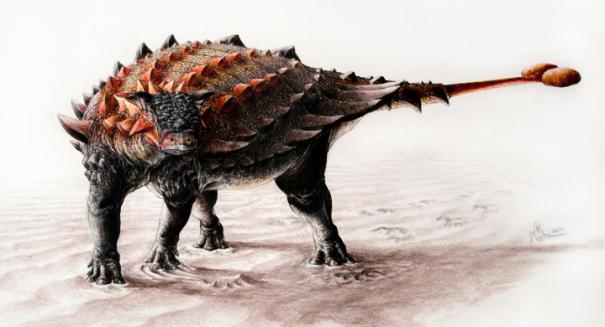
A new study shows that a recently discovered ankylosaurid dinosaur species from New Mexico has relatives with ankylosaurids in Alberta, Canada.
A study published Wednesday in the journal PLOS ONE reveals that a newly discovered species of dinosaur found in New Mexico has close ties to the ankylosaurid dinosaurs of Alberta, Canada.
Researchers of the study, led by Victoria Arbour of the University of Alberta, performed a phylogenetic analysis on the new species, known as Ziapelta sanjuanensis, to examine its possible links to the species in Alberta.
“Bob Sullivan, who discovered the specimen, showed us pictures, and we were really excited by both its familiarity and its distinctiveness – we were pretty sure right away we were dealing with a new species that was closely related to the ankylosaurs we find in Alberta,” said Arbour in a recent statement.
According to the study, Ziapelta comes from the San Juan Basin in northwestern New Mexico and stands out from other ankylosaurs with its notable physical characteristics. “The horns on the back of the skull are thick and curve downwards, and the snout has a mixture of flat and bumpy scales – an unusual feature for an ankylosaurid,” said Arbour. “There’s also a distinctive large triangular scale on the snout, where many other ankylosaurids have a hexagonal scale.”
According to the statement, Ziapelta lived throughout the Late Cretaceous, when both New Mexico and Alberta provided beachfront properties. While Ankylosaur fossils are common throughout southern Alberta, none have been found in the gap in Alberta’s ankylosaur fossil record known as the Horseshoe Canyon Formation.
“The rocks in New Mexico fill in this gap in time, and that’s where Ziapelta occurs,” said Arbour. “Could Ziapelta have lived in Alberta, in the gap where we haven’t found any ankylosaur fossils yet? It’s possible, but in recent years there has also been increasing evidence that the dinosaurs from the southern part of North America – New Mexico, Texas, and Utah, for example – are distinct from their northern neighbors in Alberta.”
While the new species may have belonged to this group of southern dinosaurs, the researchers hope to uncover Ziapelta fossils in the Horseshoe Canyon Formation in the future.
Leave a Reply